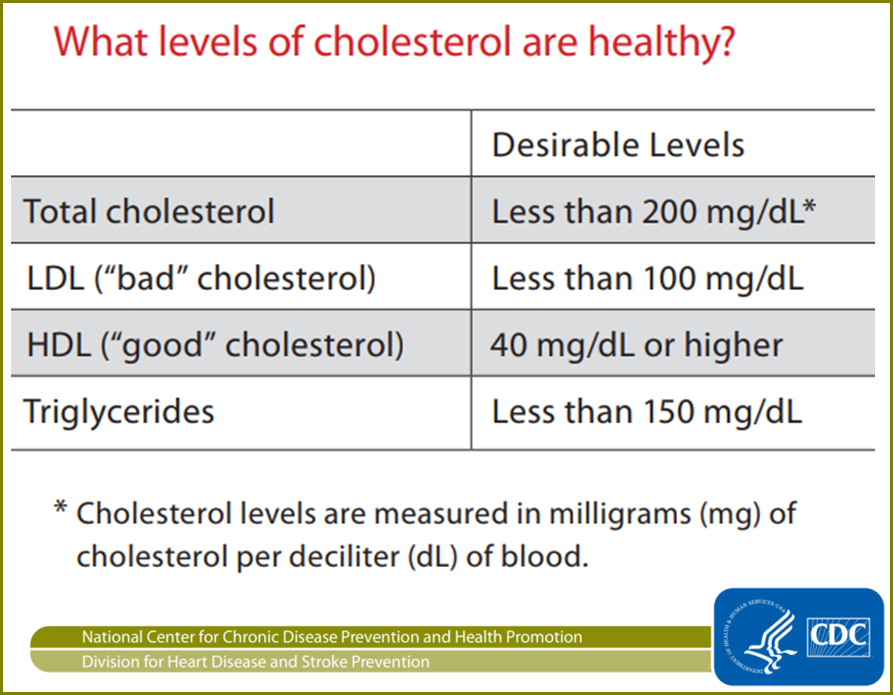

Cholesterol is measured in three categories:
- total cholesterol
- LDL, or ‘bad cholesterol”
- HDL, or ‘good cholesterol”
LDL vs HDL
- LDL (low-density lipoprotein cholesterol, also called “bad” cholesterol)
- HDL (high-density lipoprotein cholesterol, also called “good” cholesterol)
LDL Cholesterol
LDL cholesterol can build up on the walls of your arteries and increase your chances of getting heart disease. That is why LDL cholesterol is referred to as “bad” cholesterol. The lower your LDL cholesterol number, the lower your risk.
If your LDL is 190 or more, it is considered very high. Your doctor will most likely recommend a statin in addition to making healthy lifestyle choices. Statins are medicines that can help lower cholesterol levels.
HDL Cholesterol
When it comes to HDL cholesterol — “good” cholesterol – a higher number means lower risk. This is because HDL cholesterol protects against heart disease by taking the “bad” cholesterol out of your blood and keeping it from building up in your arteries. A statin can slightly increase your HDL, as can exercise.
Cholesterol levels for adults
- Total cholesterol levels less than 200 milligrams per deciliter (mg/dL) are considered desirable for adults. A reading between 200 and 239 mg/dL is considered borderline high and a reading of 240 mg/dL and above is considered high.
- LDL cholesterol levels should be less than 100 mg/dL. Levels of 100 to 129 mg/dL are acceptable for people with no health issues but may be of more concern for those with heart disease or heart disease risk factors. A reading of 130 to 159 mg/dL is borderline high and 160 to 189 mg/dL is high. A reading of 190 mg/dL or higher is considered very high.
- HDL levels should be kept higher. A reading of less than 40 mg/dL is considered a major risk factor for heart disease. A reading from 41 mg/dL to 59 mg/dL is considered borderline low. The optimal reading for HDL levels is of 60 mg/dL or higher.